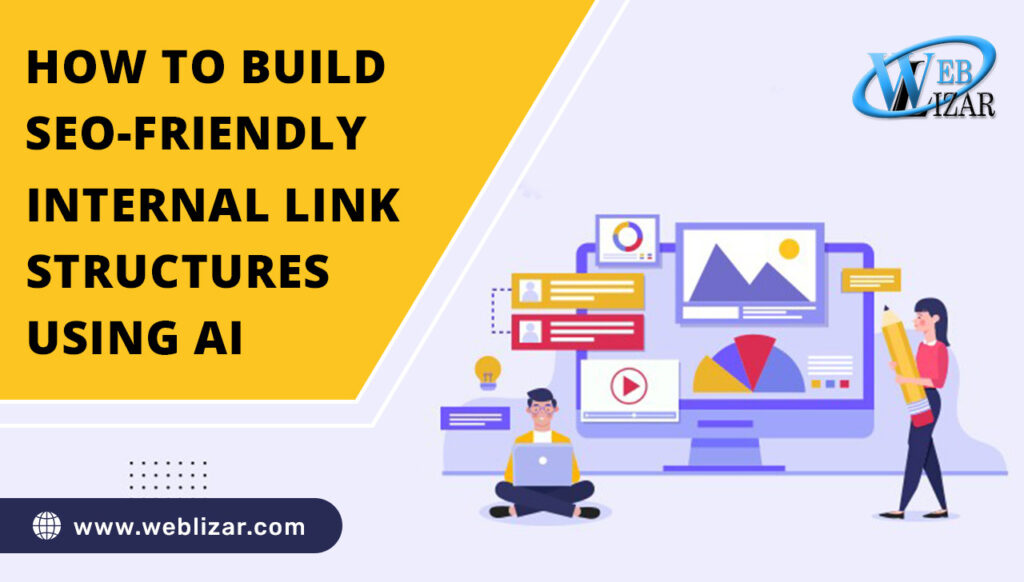SEO-Friendly Internal Link Structures Using AI: Artificial intelligence is among the most powerful tech advancements of today’s paradigm. It’s in high demand across multiple industries. Be it automotive, consumer products, education, health care, you name it, and several companies are already using this tech. However, the majority of people don’t know that artificial intelligence can help you improve SEO and hone the internal linking task.
Leveraging AI, you can ensure the internal linking structures are correct and they are adding value to your website.
If you are also new to this implementation of AI in SEO services then fret not.
We have got you covered in this post and we’ll check this out in detail. So, even if you are new to search optimization, this AI-based implementation can help you boost SEO drastically. Before diving into the core element, first, understand if your site’s URLs need to be optimized.
Get Now: Intechno Seach Engine Optimization Services
Is URL optimization and internal linking important
The majority of the websites running on the internet need to have solid URL optimization and internal linking to boost crawlability. When the URLs are SEO-friendly, it becomes easier for both the bots and the visitors to know about the page better. As every keyword and website has its weightage, the benefit of internal linking varies.
However, not optimizing your company’s website for internal linking will lose several opportunities to rank in competitive positions.
Build SEO-Friendly Internal Link Structures Using AI
On this note, let’s have a look at how artificial intelligence can help in SEO-friendly internal linking structures.
Also Check: List of SEO Trends In 2024: Check Now
Finding highest ranking potential
The biggest benefit of leveraging AI on your website is that you can easily find out what keywords to choose. In addition, you will also get accurate suggestions for what pages you need to make the links. This will help you save substantial time in finding the internal linking opportunities manually.
How do you know which pages need internal linking?
It’s a tricky question to answer while going with a traditional manual approach. Typically, your home page should get the maximum number of internal links as it will pass the link juice. Along with the home page, some other important pages are popular product categories, products, and service pages. As the link juice will pass to these pages also, they will start ranking on their respective keywords.
One thing you need to keep in mind while optimizing the internal linking structure is don’t use the mega menu option until it’s very important. It is because it’s not optimized from an SEO perspective and it will make the SEO implementations even more complicated. Megamenu makes it difficult for webmasters to track down the exact conversion path that their customers follow to buy products.
AI can suggest external to the internal-link ratio
Another important aspect that artificial intelligence can handle is the right ratio of internal and external links. For effective SEO practices, it’s important to maintain the right ratio, and manually figuring this out is a tedious task. However, using AI, webmasters can quickly calculate the weightage of internal and external links and get the right ratio.
Suggested Post: SEO Lead Generation Tips: To Grow Your Business 2024
As search engines focus on excellent user experience on a website, and by using AI, it becomes easier for webmasters to get all things done right. Beginners make the mistake of overdoing the internal and external linking of every page unnecessarily. It ultimately brings no benefits and the page usability gets terrible on mobile devices. So, having the right balance is important to gain the best SEO outcomes.
Picking up the right pages
It’s difficult to find out which pages need the most internal linking and what are the potential opportunities. Google Analytics gives tons of data that requires significant scrutiny which the majority of beginners can’t do correctly. That’s the reason why you need the support of artificial intelligence to pick the right pages.
When you know the current status of the page and what could be the potential benefits, it becomes easier for you to perform internal linking faster.
When you are trying to build up your internal linking strategies, you need to ensure that the key aspects and meanings of your pages remain intact. The focus should not deviate from the main purpose of the page. If you mistakenly internal link several pages, the main page may lose its importance.
Also Read: Top 10 Key Benefits of SEO For Business in 2024
That’s the reason, AI can help you with the number of links you are using per page.
Carefully pick the right keywords, and pages, and then start building your internal linking pages. Using artificial intelligence, you will save a lot of time in linking every single page manually. This technology can do this for you within a few minutes.
Final Thoughts – SEO-Friendly Internal Link Structures
Artificial intelligence is the future and digital marketers can get the groundbreaking advantage of this tech in improving the overall SEO. If you also have a team of in-house developers, you can start experimenting with AI on your website and see how significant productivity it brings.
To optimize internal linking: 1. Identify important pages. To create an internal link for SEO: 1. Choose relevant anchor text.FAQs”
How do you optimize internal linking structure?
2. Use descriptive anchor text.
3. Prioritize user experience.
4. Keep links natural.
5. Regularly update links.How do I create an internal link for SEO?
2. Link to related content.
3. Ensure the link flows naturally within your content.
4. Use descriptive and keyword-rich anchor text.
5. Avoid excessive linking.
6. Regularly review and update internal links for relevance.

